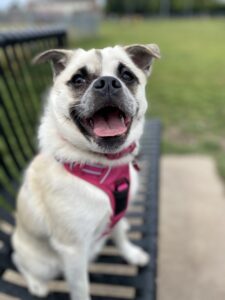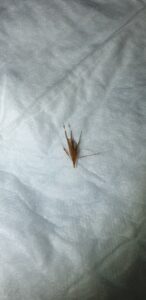
Every year, many different grasses shed barb-like seeds which can stick to an animal’s coat and, in some cases, burrow into the body.
If left untreated, the seeds can cause life-threatening infections within the chest cavity and abdominal cavity or can migrate to the spine, where they cause severe pain and debilitation.
The warning from the team here at Cave Veterinary Specialists which follows a recent case where Lyla, an eight-month-old Pug, needed swift help to remove a seed which she had inhaled.
Lyla underwent a procedure called a rhinoscopy, where a special rigid camera is used to locate the grass seed and flush it out.

Our medicine team here at Cave Veterinary Specialists, said: “Grass seeds can cause a lot of irritation and pain to animals and because they can migrate internally, this can lead to infections within the chest cavity or abdominal cavity.
“These are both life-threatening conditions, which often require specialist treatment. They can also migrate to places such as the spine, causing severe pain and debilitation.
“If you suspect your dog may have a grass seed, then it’s vital you seek urgent help from a vet. The earlier these problems are detected, before the seed has had time to migrate around the body, the better, as it can usually be dealt with.”
“The signs which mean a pet may have been affected by a grass seed can include head shaking, sneezing, coughing, sore eyes, swelling in the neck and mouth and foot licking, when seeds lodge in the hair between the toes.
In most simple cases, animals will require a sedation or an anaesthetic for the vet to remove the seed.
There several steps which pet owners could take. The best way to avoid your pets being affected by grass seeds is to avoid walks through fields, particularly those with long grass.
You should also check the underside of the ear flap and hair around the ears and toes, particularly in long-haired breeds such as spaniels.
Regular combing and grooming can also help remove seeds, as can asking your groomer to clip the hair from the underside of the ear or between the toes during the summer months.”




